CAD Exchanger SDK 3.23.0 有什么新功能
We are glad to introduce the latest release of CAD Exchanger. With new versions of formats, revised documentation, and improved performance, this update is sure to enhance your CAD experience.
Here are the highlights of CAD Exchanger 3.23.0:
- NX 2306, Autodesk Inventor 2023 and 2024 import;
- Reworked BIM model structure;
- SDK documentation global revision.
Support of Autodesk Inventor and Siemens NX new versions??
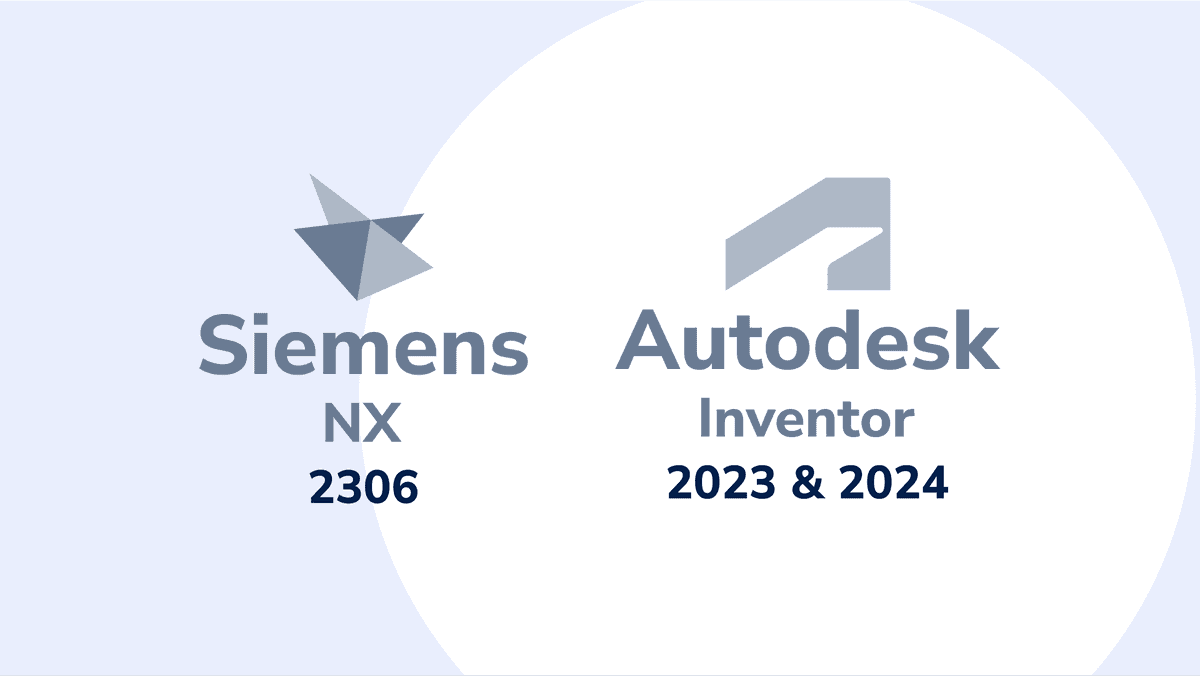
Support of Autodesk Inventor and Siemens NX new versions
Our team is continuously improving processes to add new formats and their versions faster and faster. Last time, we added the import of Autodesk Inventor 2022 and these days, we supplemented it with versions 2023 and 2024.
Since release 3.8.0, we provided direct support of Siemens NX proprietary file format. Now, CAD Exchanger supports NX 2306, allowing you to easily convert and exchange files with this latest version. As usual, we preserve all the basic data: B-Rep representations, polygonal representations, assembly structure, graphical PMI, colors, and names.
SDK enhancements
Reworked BIM model structure
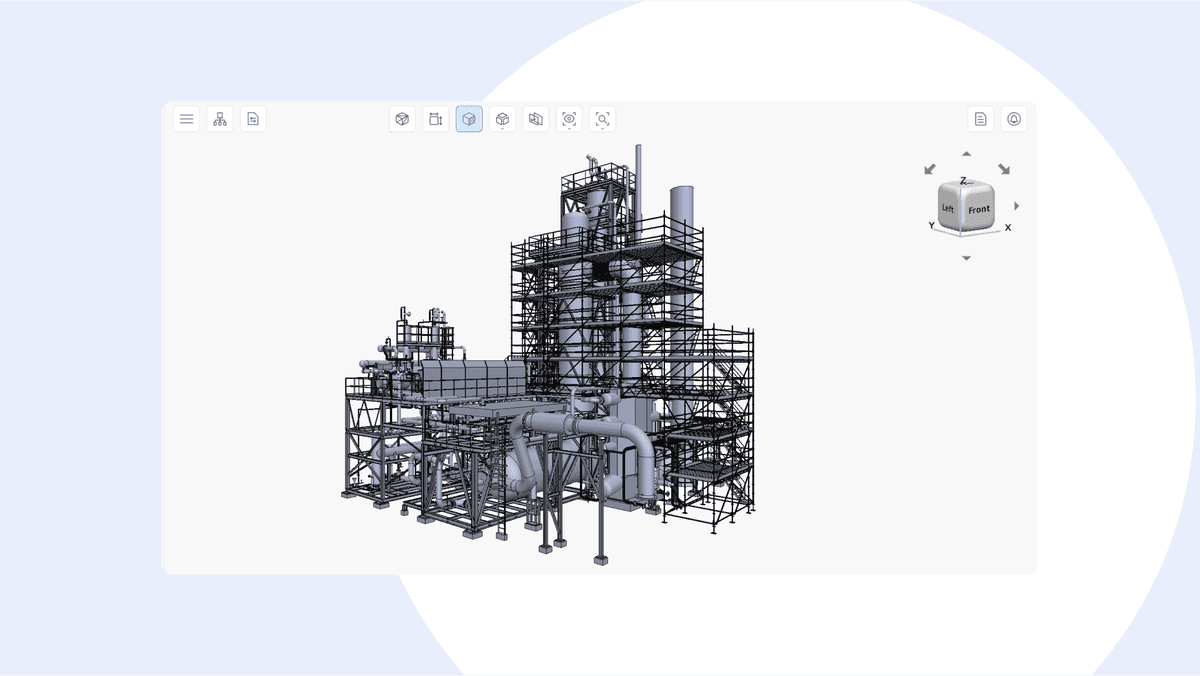
Reworked BIM model structure
A few releases ago, we added a BIM-specific data model tailored for BIM workflows and, based on user feedback, introduced a few improvements. Some new changes allow our users to create a perfectly valid model and make it clearer to work with objects, elements, and containers. For example, a rigid site-building-storey inclusion order eliminates counterintuitive building options, such as stairs as containers for the toy house.
We have also added Name and PropertyLibrary fields, so now the user can get more metadata from the BIM model. By the way, keep in mind that all these updates also apply to WTK, so working on the web has become even easier.
Expanded API
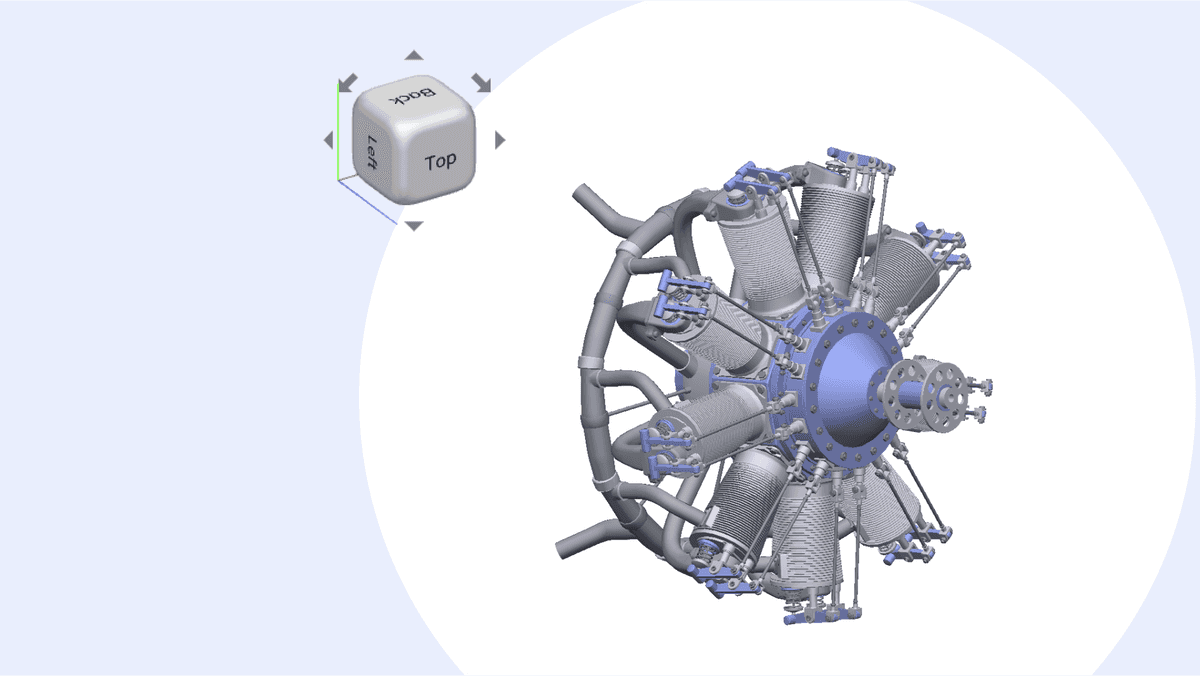
Expanded API
According to customer requests, we have added a new class, ModelData_OrderedWireIterator, as a feature that allows iteration over edges in a wire on a face in topologically connected order. Of course, you can still use our regular iterator instead, but with the new one, you are guaranteed to get an accurate result.
Another request was about the transformation matrix. We developed a special method that allows the user to choose from which angle he wants to open the model. The user sets the transformation matrix, sends the model to our algorithm, and indicates what he wants to do, for example, rotate, move, reduce, etc. Previously, the user had to rebuild the model: he needed to find the transformation matrix and change it manually. Now, SDK does it for him, and it significantly saves time and effort.
We also have improved the CDXWEB file structure to load multi-LOD files faster in the browser. This mainly affects only the JT format but still can be important for some developers.
Unity and UNIGINE updates
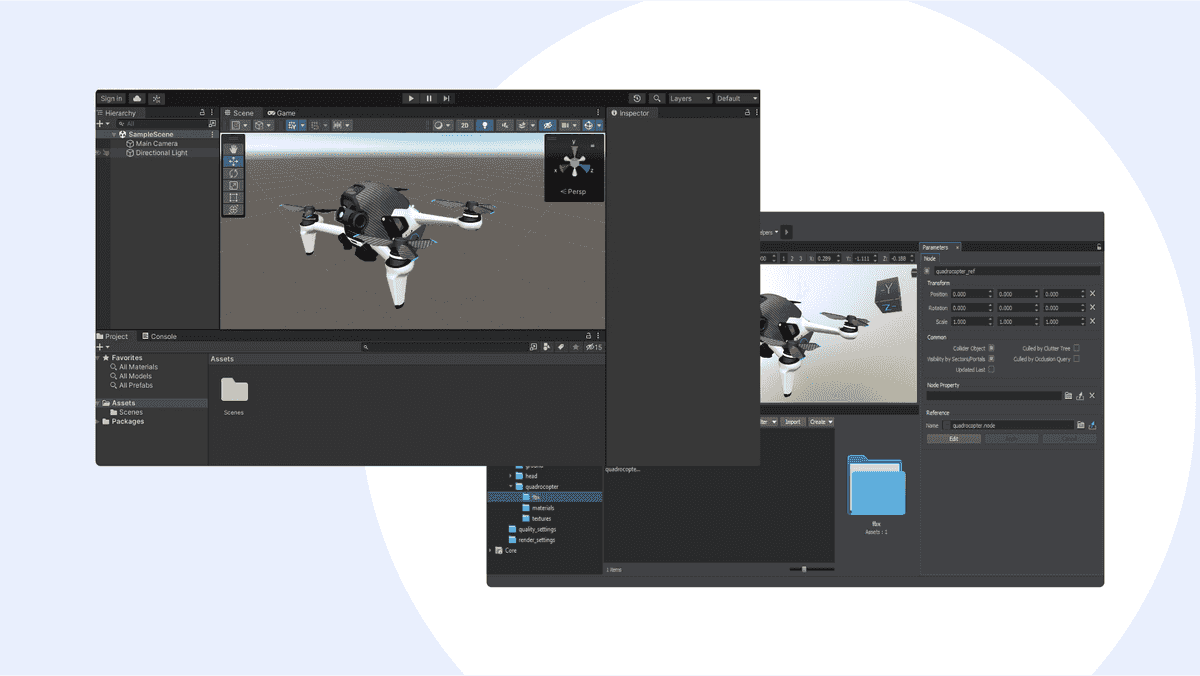
Unity and UNIGINE updates
Our integration with Unity provides full texture support in the form of file structures. Currently, there are two types of textures: a picture and a file. Since only a few formats support textures as images, we decided to save all images as PNG files. However, not all formats support textures themselves, so it is recommended that users check this point before exporting.
Another task was to provide support for the latest version of UNIGINE, 2.17. This version has a significant amount of features that can be particularly useful, so many users prefer to move to it.
For example, previously, only one importer could correspond to one extension. Because of this, some of our functionality was missed, and it was impossible to use two importers for one extension. Now, the user can add as many importers as he likes for each extension. Moreover, he can choose which importer to use: the standard one from UNIGINE or ours. It is enough to specify the vendor ID in addition to the desired extension. As a result, our current integration has no above-mentioned limits, and we finally can import all supported formats.
Revised documentation?
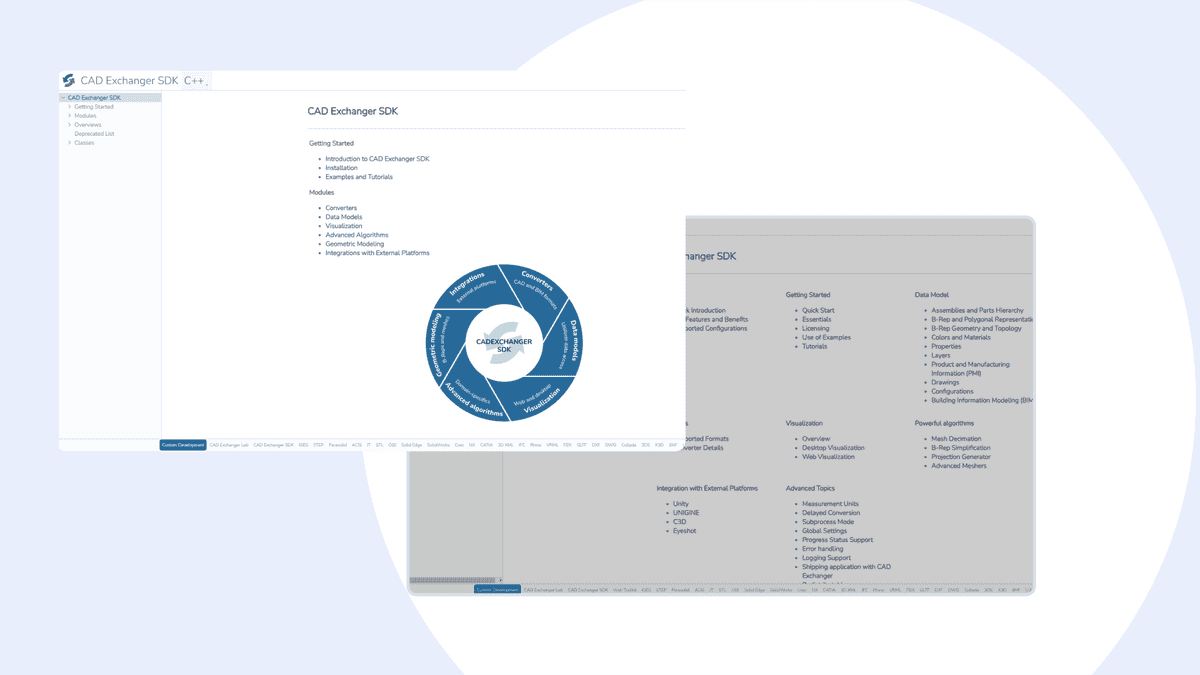
Revised documentation
Our SDK documentation also does not stand still. In this release, we have revised all of it to make learning the material and finding answers as convenient as possible.
The new documentation is distinguished by its consistent structure, the presence of all modules, and new articles, for example, integration with Open CASCADE. We have made?a separate page for examples, including online demos and interactive examples based on WTK.
?Codename 'CAD Exchanger Manufacturing Toolkit'
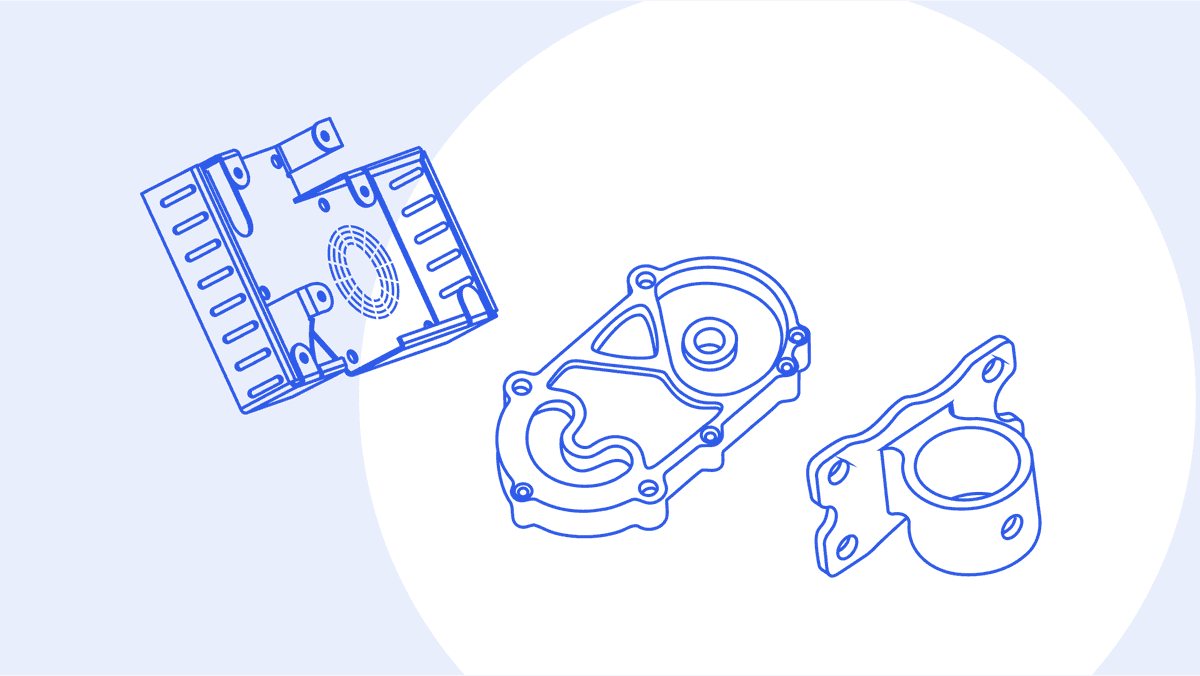
Codename 'CAD Exchanger Manufacturing Toolkit'
For those already familiar with CAD Exchanger SDK, you might know about the Manufacturing Toolkit (MTK) – a set of algorithms geared towards cost estimation, design for manufacturability, and sheet metal operations. It's been quietly complementing our core CAD Exchanger SDK, soon, it's stepping into the spotlight as a standalone product.
In this release, we've dived deep into our DFMA, unfolding algorithm, and measurements, tweaking them to be not just accurate but quicker too. Stay tuned for more updates; there's a lot more coming your way.
DFMA is a crucial aspect of CNC machining?as it is centered around inspecting models for potential manufacturing issues. We improved fillet related checks logic and now can find spline fillets. Also, the updated logic for the Outer Diameter Profile check no longer recognizes perpendicular turning faces as an error.
Our unfolding algorithm to reverse engineer original metal sheets allows users to get a full 2D projection. Earlier, the user could clarify which face of this projection corresponds to the original face and vice versa. We have added the same match for edges so that users understand the location, regardless of representation.
We also paid attention to our measurements. With this release, users can calculate the volume for removal during the manufacturing of a particular feature. As for the wall thickness algorithm, our team reworked it. Starting from now, this algorithm provides more accurate minimum and maximum values, and we plan to add more values, including averages, in the future.
Format improvements
We are always committed to enhancing the user experience by improving our formats. Let's see what we have prepared this time.
?BIM file format updates???
- IFC: fixed the structure of files exported from mechanical CAD and 3D formats, data races when reading files containing non-ASCII characters. Improved import of entities based on profile curves with big gaps between vertices of said profiles.
?MCAD file format updates???
- ACIS: improved support of ACIS ASM binary files.
- Collada: improved export of transparency.
- FBX: fixed import of objects without mesh.
- glTF: fixed textures not being exported on Linux and improved export for assemblies with Draco compression.
- NX: import now retains the transparency of objects.
- OBJ: added export for materials with transparency.
- STEP: added support for import of used-defined properties at geometry level assigned using 'geometric_item_specific_usage' entities.
- U3D: improved appearance export in debug mode.
CAD Exchanger 3.23.0, November 2023
Highlights:
- Added import of new version of formats: Autodesk Inventor 2023 and 2024, NX 2306.
- Documentation has been reworked significantly to make it easier to navigate. It also
now contains comprehensive information about SDK, Web Toolkit and Manufacturing Toolkit,
together with all their examples.
- BIM model structure has been reworked to align more closely with relevant formats and
mainstream usage.
SDK:
- Added new examples: "coloring", "configurations" and "drawings".
- Added support of Microsoft Visual Studio 2022 (vc14.3).
- For product improvements, evaluation version may now collect anonymous usage data
(such as file formats and sizes). No data collection is performed in the commercial
version.
SDK/API:
- BIM-related API changes:
- Removed ModelData_BIMSpace class and added ModelData_BIMCompositeElement class to represent
groupings of elements not related to model structure.
- Renamed base class for all BIM classes from ModelData_BIMElement to ModelData_BIMBaseObject
and added an ability to carry UUIDs to it.
- Renamed ModelData_BIMHostElement to ModelData_BIMHost.
- Introduced restrictions on types of BIMElement that can be added to each subclass of BIMHost.
This enforces a rigid site-building-storey inclusion order.
- Added Name and PropertyLibrary fields that relate to the entire ModelData_BIMModel.
- Added new class ModelData_OrderedWireIterator that iterates over edges in a wire on a face
in topology connected order.
- Added new overload to ModelAlgo_TransformationApplier to transform an entire ModelData_Model.
- Added ModelData_ShapeList class to Python, C#, and Java API.
- Stub files have been added to Python packages, enabling autocomplete back in some editors.
- Improved CDXWEB files structure to load multi-LOD files faster in the browser.
- Fixed crash in methods that accept ModelData_PMIGraphicalElementComponent,
ModelData_PMISemanticElementComponent or ModelData_PMISemanticAttribute as parameters
in Python API.
SDK/Documentation:
- SDK documentation now contains information on all modules and products, including
Manufacturing Toolkit and Web Toolkit.
- The SDK documentation has been streamlined to make it easier for a new reader.
Multiple articles have been rewritten (introduction, installation, etc.), others
have been added (e.g. Integration with Open CASCADE).
- SDK, Web Toolkit and Manufacturing Toolkit examples are now all on a single page.
- Added documentation for classes for which there were no description before.
SDK/Unity add-on:
- Fixed texture export from Unity model to ModelData_Model.
SDK/UNIGINE add-on:
- Add-on ported to currently relevant UNIGINE SDK 2.17.
SDK/Web Toolkit:
- Added API to check scene node is selected or not.
- Fixed selected scene node rendering when the node becomes visible.
- Fixed selected measurements rendering.
- Fixed selection algorithm for PolyVertex selection mode.
- Fixed TypeScript definitions (d.ts file).
ACIS:
- Improved support of ACIS ASM binary files.
Collada:
- Improved export of transparency.
FBX:
- Fixed import of objects without mesh.
glTF:
- Fixed textures not being exported on Linux.
- Improved export for assemblies with Draco compression.
IFC:
- Fixed the structure of files exported from mechanical CAD and 3D formats
for wider support in downstream applications.
- Fixed data races when reading files containing non-ASCII characters.
- Improved import of entities based on profile curves with big gaps between vertices
of said profiles.
NX:
- Import now retains the transparency of objects.
OBJ:
- Added export for materials with transparency.
STEP:
- Added support for import of used-defined properties at geometry level assigned
using 'geometric_item_specific_usage' entities. These properties can be retrieved from
property tables attached to BRep subshapes.
U3D:
- Improved appearance export in debug mode.
Manufacturing Toolkit 3.23.0, November 2023
General:
- Starting with this version, Manufacturing Toolkit is distributed in the CAD Exchanger
SDK package.
- Manufacturing Toolkit documentation and examples are now available within the
CAD Exchanger SDK documentation.
CNC Machining:
- DFM (Design for Manufacturing) Analysis:
- Improved fillet related checks logic to find spline fillets.
- Updated logic for Outer Diameter Profile check. The rule will no longer be called
for perpendicular turning faces.
Sheet Metal:
- Added association between edges of original and unfolded models. It is accessible with
SheetMetal_FlatPattern::RelatedShape() method.
- Feature Recognition:
- Added possibility to find Tabs on circular forms.
Measurements:
- Added volume calculation for SheetMetal_Hole and SheetMetal_Cutout features.
- Added volume calculation for Machining_Hole, Machining_Countersink and Machining_Pocket
features.
Wall Thickness:
- Overhauled the algorithm to make it faster and more accurate. 本文来自互联网用户投稿,该文观点仅代表作者本人,不代表本站立场。本站仅提供信息存储空间服务,不拥有所有权,不承担相关法律责任。 如若内容造成侵权/违法违规/事实不符,请联系我的编程经验分享网邮箱:veading@qq.com进行投诉反馈,一经查实,立即删除!